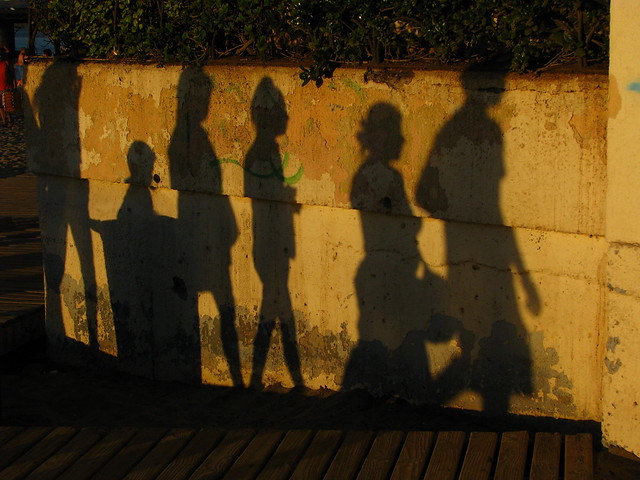-
Without Migrants, Who Will Take Care of You?

The ongoing crisis at our southern border is exacerbating another, less visible, one—the crisis in elder and childcare in the United States. With baby boomers aging and more parents of young children working outside the home, our country’s need for non-familial caregivers is skyrocketing. Carework is growing five times faster than any other sector in our economy; in fact, it is set to become the largest paid occupation in the U.S. by next year. While US citizens are not keen to take these jobs, migrants, especially women, are. But the current bottleneck—not just at the border but throughout our immigration system—is slowing down the flow of these vital workers.
Since 2005, the number of naturalized citizens and foreign-born non-citizens working as caregivers in the U.S. grew by 70 percent and 20 percent respectively. Yet there is currently no US visa category dedicated to migrants seeking to become caregivers. Nor does the topic arise in lawmakers’ discussions of immigration policy.
Without a legal means of entry, too many of the women coming here to care for our children and our elders must take significant risks. Some, especially from the Caribbean, arrive by plane or boat and simply overstay their tourist visas, but others, particularly those from Central America, must brave perilous journeys overland, paying enormous sums to unreliable “coyotes” who are supposed to guide and protect them but often leave them vulnerable to theft and violence. (By some estimates, more than half of the women from Honduras, El Salvador and Guatemala crossing Mexico to our southern border are raped enroute, and many women end up being trafficked into prostitution.)
Those who manage to get here and find a job remain vulnerable if they lack documentation—always at risk of being discovered and deported and thus fearful of complaining if they are forced to work long hours, underpaid (or not paid at all), or suffering indignities. And while looking after the elders or children of their employers, they continue to care for their own family members back home. By engaging in “transnational mothering” via cellphone or Skype, they try to monitor their children and manage the health and well-being of elders regularly. While modern technology facilitates this process, “mothering across borders” leaves them stressed and frustrated, knowing that because of the expense and perhaps danger of returning home, they may not see their loved ones for years on end—if ever.
We need migrants to meet the demand for caregiving, and migrants need jobs like caregiving that are transferable from country to country. As a nation, we cannot continue to discuss immigration without truly seeing immigrants–without understanding their motives for leaving their home countries and coming to ours. Too much of debate today assumes mistakenly that every migrant wants to become a US citizen; this is not true. Many leave places where their earnings cannot support a family and come here hoping to make enough to send remittances to those staying behind. For most, the first priority is paying for children’s education, then housing improvements, and perhaps something to generate income.
Given these goals, migrants would make good use of dedicated caregiver visas that allowed them to enter the U.S. and work for a defined period of time—say a few months or a year–and then go back, perhaps to remain, perhaps to engage in circular migration, returning to the U.S., either to the same job or a different one. Two women (sisters, mother and daughter) might decide to share a job, one working here while the other one cares for the family at home, and then switching, thereby ensuring continuity at both ends. But such mobility and flexibility would be possible only if migrant caregivers are guaranteed legal entry.
Caregiving touches everyone. Former First Lady Rosalynn Carter said it best: “There are only four kinds of people in the world: Those who have been caregivers; those who currently are caregivers; those who will be caregivers; and those who will need caregivers.” Americans are currently benefiting from a system of global economic inequality that has created a pool of capable women willing to take jobs caring for us, our children, and our elders, but often at great cost to themselves. President Trump has challenged Congress to come up with a bi-partisan plan to “fix the broken immigration system.” Caregiver visas would be a sensible element of any new set of policies, acknowledging our needs as well as those of migrants, and averting another national crisis.
Read More:
- The Global Care Tilt: Migrant Caregivers Flock to Wealthy Countries to Meet Rising Demand
- The Care Knot: Untangling Women’s Rights and Responsibilities
- New Report: The Juggling Act of Caregiving: Balancing Career, Health, and Gender Roles
- Why Caring Creates Problems—and What Government Can Do
- More Countries Want to Invest in Caring. Here’s How They Should Do It
Sonya Michel is professor emerita of history, American Studies and Women’s and Gender Studies at the University of Maryland, College Park. She is, most recently, co-editor of Gender, Migration and the Work of Care: A Multi-Scalar Approach to the Pacific Rim (Palgrave Macmillan, 2017), and Reassembling Motherhood: Procreation and Care in a Globalized World (Columbia University Press, 2017).
Sarah Barnes is project director of the Maternal Health Initiative at the Wilson Center. The effect caregiving has on the health and well-being of women is detailed in Barnes’s latest report, The Juggling Act of Caregiving: Balancing Career, Health, and Gender Roles.
Photo Credit: “Sombras,” January 2012, courtesy of Roberto Bonvallet.
Topics: caregiving, Caribbean, Central America, development, Dot-Mom, El Salvador, gender, global health, Guatemala, maternal health, migration, U.S.
 A Publication of the Stimson Center.
A Publication of the Stimson Center.



